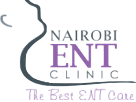Acute sinusitis
What is acute sinusitis?
Rhinosinusitis, more commonly called sinusitis, is inflammation of the sinuses. Sinuses are hollow areas in the bones of the face and head that are connected to the nose through small narrow channels. When they get blocked or filled up with fluid, viruses or bacteria may cause infection.
There are two types: acute sinusitis which lasts for less than four weeks and chronic sinusitis which is present for more than three months.
What are the causes of acute sinusitis?
The most common causes of acute sinusitis are:
- Viral infection, associated with the common cold
- Bacterial sinusitis occurs rarely (approximately 0.5%) and is usually a complication of viral sinusitis.
Other minor causes include:
- Allergic rhinitis
- Low immune states
- Medications that decrease immunity
- Deviated nasal septum
- Abnormal structures in the nasal passages
- Smoking or exposure to smoke
What are the symptoms of acute sinusitis?
The classic symptoms are:
- Nasal congestion or blockage
- Thick yellow or green discharge from the nose
- Facial pain worse on bending forward
- Reduced smell or lack of smell
- Cough in children
Other associated symptoms include the following:
- Fever
- Headache
- Bad breath (halitosis)
- Fatigue
- Pain over the teeth
- Ear pain/pressure/fullness
What are the danger signs in acute sinusitis?
Seek immediate help or medical attention if any of the following occur:
- High fever (>102.5º F or 39.2º C)
- Sudden, severe pain in the face or head
- Double vision or difficulty seeing
- Confusion or difficulty thinking clearly
- Swelling or redness around one or both eyes
- Stiff neck, shortness of breath
What is the self-administered questionnaire?
SNOT 22 is a self-administered questionnaire that will provide us further insight into the diagnosis of acute sinusitis.
What are the treatment options in acute sinusitis?
It is difficult to know if you have a viral or bacterial sinus infection initially. However, most people with a viral infection improve without treatment within seven to 10 days after symptoms begin. Bacterial sinusitis also sometimes improves without treatment, although it can also worsen and require treatment.
Initial treatment aims to treat the symptoms because the majority of patients improve in 7-10 days.
Initial treatment
- Pain killers-over the counter medications like ibuprofen, diclofenac or paracetamol help.
- Nasal irrigation-flushing the nose with warm saline solution (salty water) several times a day reduces the pain and clears away the debris in the nose.
- Nasal decongestion-reducing the swelling in the nose opens up the drainage ducts. A maximum of 3 days should be used with this sprays otherwise rebound congestion will occur.
- Others
- Mucolytics-this may help to thin the mucus
- Antihistamines-this are useful if you have an allergic cause to your sinusitis
- Warm compresses-this relieves the pain over the sinuses
Second-line treatment
- Nasal steroid-this are steroids that are sprayed directly to the nose. They help with reducing the inflammation and alleviating the swelling.
Do I need an antibiotic?
Even without antibiotics, bacterial sinusitis can clear up by itself in 75% of the population.
Antibiotics are recommended in the following situations:
- Bothersome symptoms lasting 10 days or longer
- Symptoms worsen within 10 days after a period of improving
- Moderate or severe symptoms
- Lack of assurance of follow up
What if you don’t improve with treatment?
If you don’t improve with treatment, a re-evaluation is warranted.
The ENT doctor might:
- Initiate antibiotics
- Change antibiotics if necessary
- Order for a CT Scan of the nose
Can you prevent sinusitis?
There is no concrete way to prevent sinusitis but the following measures might help:
- Don’t smoke and avoid other people’s smoke
- Wash your hands often especially during the cold and flu season, and try not to touch your face.
- Avoid things or environments that you are allergic to.
Disclaimer
The content on the Nairobi ENT website is not intended nor recommended as a substitute for medical advice, diagnosis, or treatment. Always seek the advice of your own physician or other qualified health care professional regarding any medical questions or conditions.
References
- Chow, Anthony W., et al. “IDSA clinical practice guideline for acute bacterial rhinosinusitis in children and adults.” Clinical Infectious Diseases8 (2012): e72-e112.
- Rosenfeld, Richard M., et al. “Clinical practice guideline (update): adult sinusitis.” Otolaryngology–Head and Neck Surgery2_suppl (2015): S1-S39.
- Fokkens, Wytske J., et al. “EPOS 2012: European position paper on rhinosinusitis and nasal polyps 2012. A summary for otorhinolaryngologists.” Rhinology1 (2012): 1-12.
- Nyagah S.N., “Ear, nose and throat-head and neck manifestations and effect of antiretroviral therapy in human immunodeficiency virus infection in children : A case control study” (Unpublished thesis)
- Tashima, Lauren, and Jay F. Piccirillo. “Are antibiotics indicated for acute sinusitis?.” The Laryngoscope9 (2014): 1979-1980.

